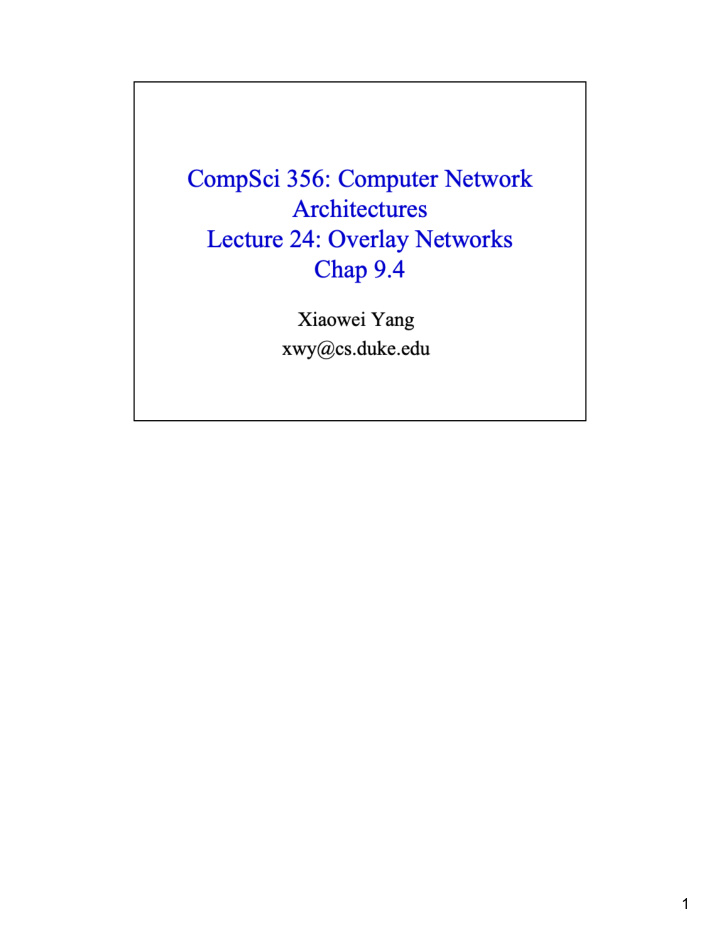



1
2
3
4
5
6
7
8
9
10
11
12
13
u Leechers A and B also announce to their peers which chunks they possess u Now we show BitTorrent’s incentive mechanism, which is also known as rate-based tit- for-tat In this case, leecher A makes the first step and offers to unconditionally upload for 10 seconds chunks to leecher B. In BT lingo, this step is called optimistic unchoking 14
u Leechers A and B also announce to their peers which chunks they possess u Now we show BitTorrent’s incentive mechanism, which is also known as rate-based tit- for-tat In this case, leecher A makes the first step and offers to unconditionally upload for 10 seconds chunks to leecher B. In BT lingo, this step is called optimistic unchoking 15
16
17
the rarest may be in only one peer so it picks a random instead which may be at many peers and downloads subpieces in SGM from multiple peers like in EGM but in the other modes he only downloads it subpieces from the same peer 18
The End Game is the name for the final download strategy – there is a tendency for the last few pieces of a torrent to download quite slowly. To avoid this, many BitTorrent implementations issue requests for the same remaining blocks to all its peers. When a block comes in from one peer, you send CANCEL messages to all the other peers requested from, in order to save bandwidth. Its cheaper to send a CANCEL message than to receive the full block and just discard it. However, there is no formal definition of when to enter End Game Mode. I found two popular definitions: 1. All blocks have been requested 2. Number of blocks in transit is greater than number of blocks left, and no more than 20
20
+ less infrastructure requirement - Single point of failure - Node joins and leaves causing much chain - one node may still be congested - packets may traverse the same link twice 21
22
23
24
25
26
27
28
29
30
31
32
33
34
35
36
37
38
Ids live in a single circular space.
40
41
Always undershoots to predecessor. So never misses the real successor. Lookup procedure isn’t inherently log(n). But finger table causes it to be.
Small tables, but multi-hop lookup. Table entries: IP address and Chord ID. Navigate in ID space, route queries closer to successor. Log(n) tables, log(n) hops. Route to a document between ¼ and ½ …
Small tables, but multi-hop lookup. Table entries: IP address and Chord ID. Navigate in ID space, route queries closer to successor. Log(n) tables, log(n) hops. Route to a document between ¼ and ½ …
45
Always undershoots to predecessor. So never misses the real successor. Lookup procedure isn’t inherently log(n). But finger table causes it to be.
Look up key 2 at node 1. key 2 < successor. So send to successor directly. 47
48
49
50
Concurrent join and stabilization are provably consistent eventually.
No problem until lookup gets to a node which knows of no node < key. There’s a replica of K90 at N113, but we can’t find it.
54
55
Always undershoots to predecessor. So never misses the real successor. Lookup procedure isn’t inherently log(n). But finger table causes it to be.
57
58
59
Recommend
More recommend